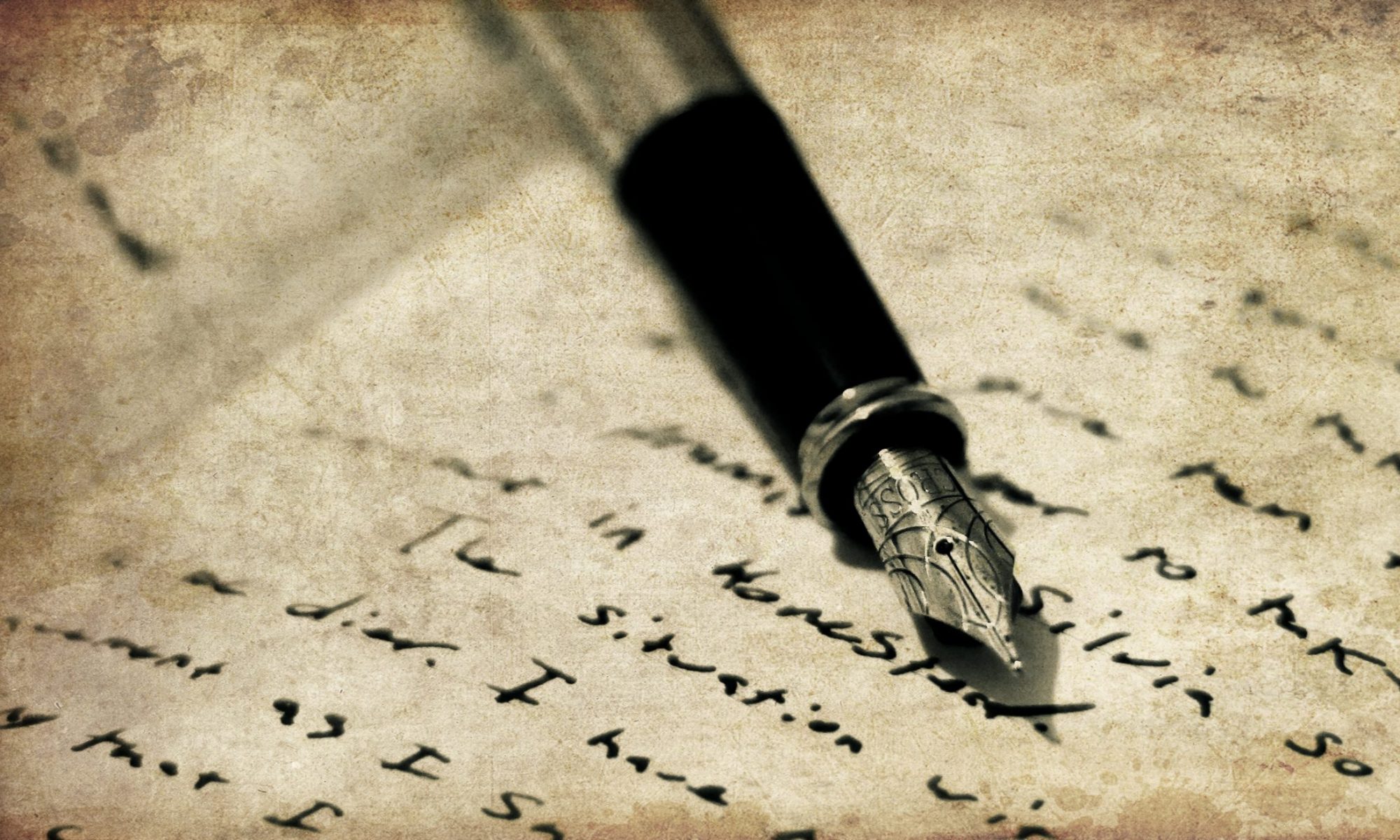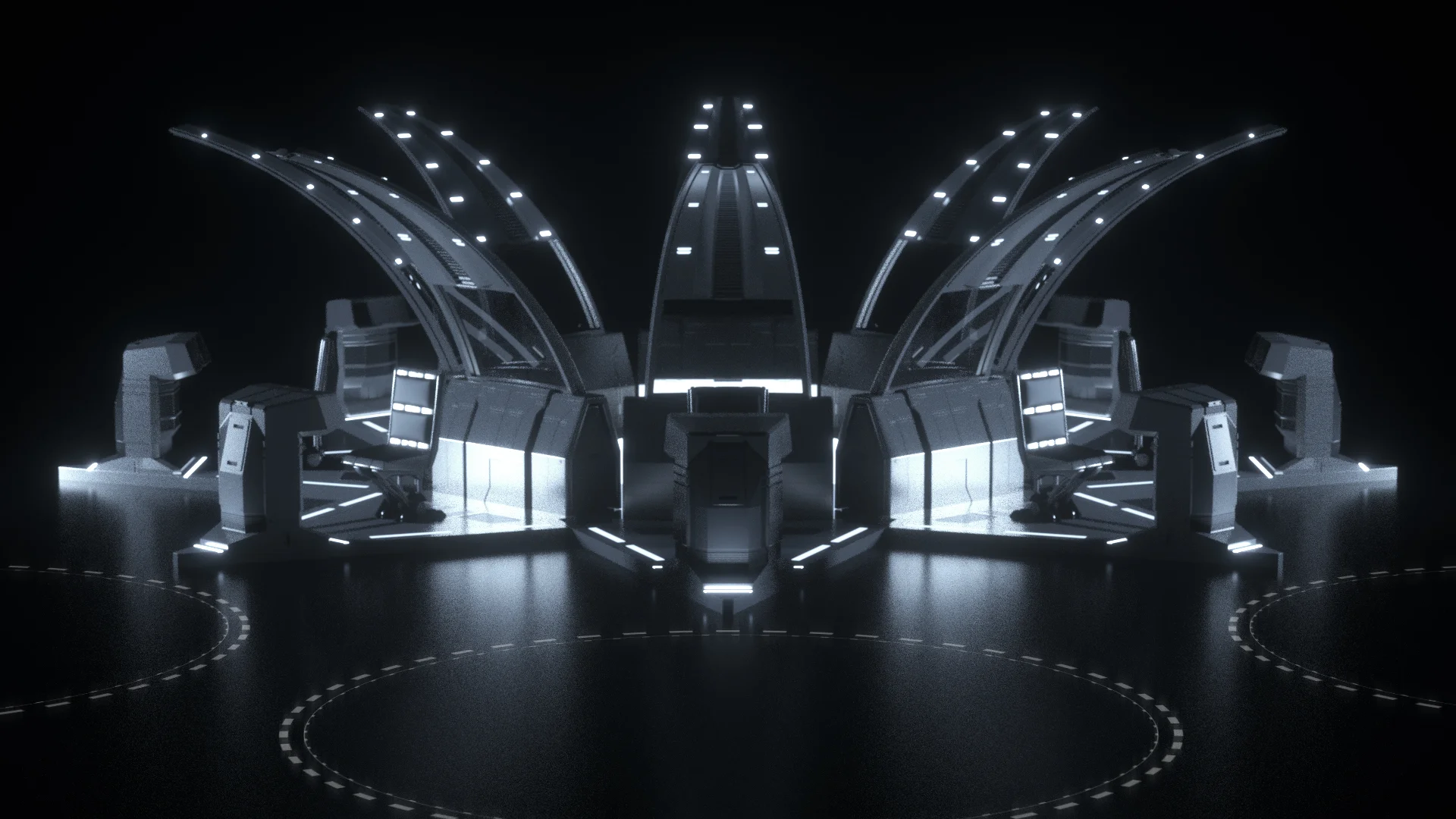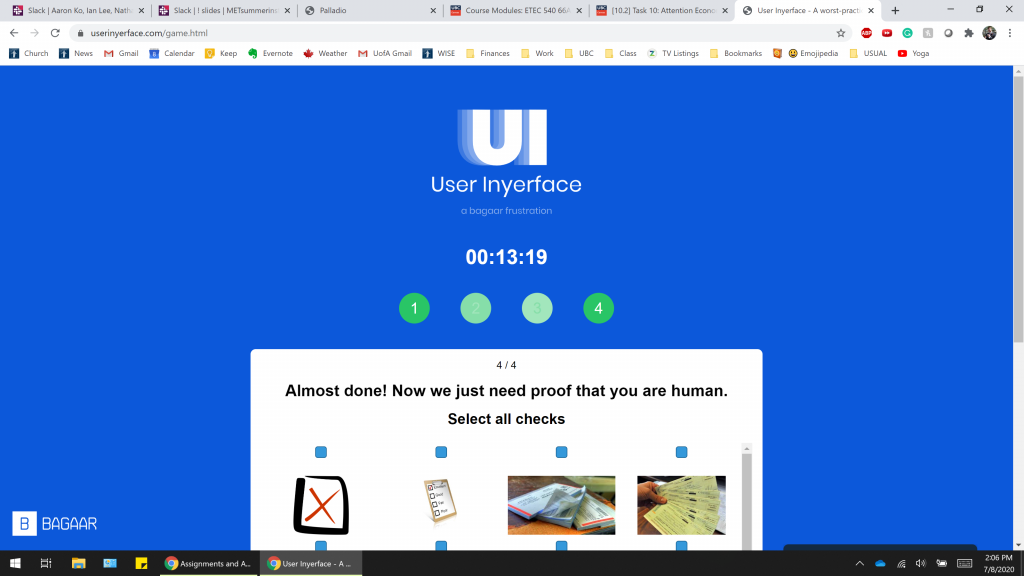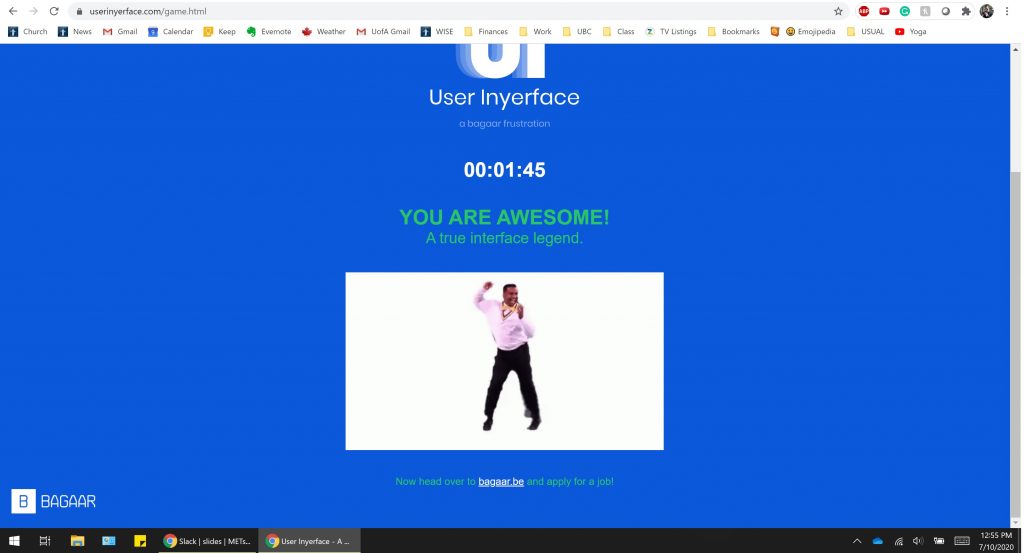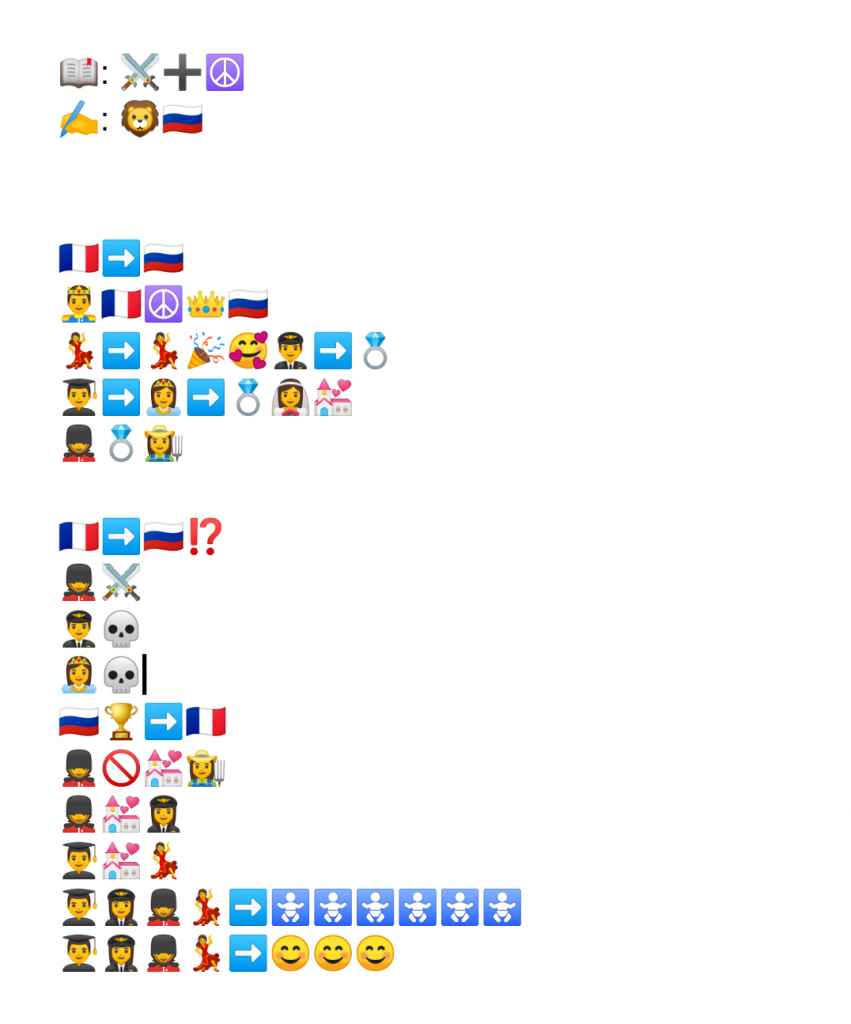The following are some of the most interesting/relevant posts from some of my colleagues in the ETEC 540 course. I’ve included a summary and reflection about each. I hope you are as intrigued as I was!
Summary
This is for the voice-dictation assignment where Andrew tells a story about a fishing trip that he went on – but with a plot twist in the end! It’s worth the read for entertainment value alone! He uses Google Docs’ Text-to-Speech function to create the story text and then includes some reflective thoughts on both the process and the results.
Reflection
I wanted to highlight and link to Andrew’s story because we both used the same authoring tool so I wanted to connect with a different attempt with the same technology. It was interesting to me to note how the technology handled the differences in our speech. My text has so many non-spaces when there should be every time I paused….yet Andrew has almost none. This implies that he must think quicker than I do when telling an oral story….and that Google doesn’t have the patience to wait for slow thinkers.
Andrew’s also differed from mine in that he chose to speak the word “period” at the end of every sentence which I opted not to do – to get the full, oral, text-to-speech experience. But I wanted to show this because his models how with just a small adaptation to the way we speak, the technology can make our story seem much more “normal” when compared with the way we are generally used to reading stories in print.
I also want to point out the similarity that happens in both of our stories with the ‘tone’ that using text-to-speech produces. Both of our attempts produced very benign sounding stories – even though, in actual fact, there would have been a lot of high emotion involved. But using the technology in this way stripped our stories of much of their emotion.
For comparison, you can access my similar task here.
Summary
In this link, Tanya has done a masterful job of printing the word TEACH using potato stamps. She includes many pictures of her process, as well as some of her own thoughts and reflections that went into how and why she printed the word TEACH and why she chose to print it in the way she did. Tanya also includes some descriptions of the challenges that she faced, how she overcame them, and her own reflections on the mechanization of printing that has happened over the centuries – well worth a look!
Reflection
I want to link to Tanya’s site for this task for two reasons: 1) to highlight her finished product as the best potato stamp work I’ve ever seen, and 2) to contrast her web architecture with my own.
- Tanya really went above and beyond in her potato stamp project and I think she (possibly more than any of us) really experienced what it would have been like for the early printers. Her project was truly a labor of love and it shows in the final result. I thought it very interesting to read about the thought she put into the font of her potato project. It made me start to think about what the early printers may have been trying to convey in their own font choices. As we learned earlier, there was a desire to make the printed word still look like the scribal script from earlier days. So I wonder how much thought, time, and effort must have been put into the artistic creation of each letter. Tanya’s project shows me just how must it must have been!
- I was also intrigued to see that Tanya has chosen a different web-authoring tool than the WordPress that most of us are using. Her Weebly site does seem to offer a much more clean, modern look than many of our sites have. Most of our sites (as amazing as they are – don’t be offended!) look like they were written around 2010. Logging in and viewing Tanya’s site feels like a breath of fresh air bringing me back to the present. This has caused me to reflect on just how fast this change has happened. I’m actually considering a final project now based on researching how different font types have become *trendy* over the years (ie. forever, it was Times New Roman) and what has led to shifts in the trends in font type. We’ll see! But it’s food for thought for everyone. It also helps that Tanya’s post is full of rich, color images which also helps cue up my eye’s interest.
If you haven’t seen it yet, I recommend checking out her project. For comparison, you can compare my attempts at both completing and documenting my project here to see what I mean about her artistry and web-design.
Summary
Tyler writes out the plot for Little Fires Everywhere using only emojis as per the assignment instructions. He then gives a brief description of his process for determining how to go about creating both the title and then the plot outline for the show. A few of our colleagues were able to guess the show by figuring out what the title was and were able to follow the plotline he created.
Reflection
I wanted to link to Tyler’s post because it was one that left me feeling utterly and completely lost. I maybe would have guessed “Small Flames World” as the title, but that’s about as close as I would have come. I had never heard of Little Fires Everywhere before.
I thought it was interesting to read the comments of those who did know the show and were familiar with the plot. I was especially intrigued by those who commented that they liked how Tyler used “ideas” rather than actual words or syllables to represent the plot. This made me realize something about the visual representation of text – the viewer MUST have some common background information in order for meaning-making to happen. If not, the way they interpret the symbols or images could vary dramatically from what the author intended. This can lead to drastic consequences (like in this recent news story from Australia where the text of emergency alerts was the same, but the symbols and colors were different …. and were thus interpreted by users in differing ways, causing confusion). This just goes to show that even though we may be heading back to a resurgence of audio/visual storytelling….that sometimes having some form of explicit text that can only have one meaning is an advantage.
Summary
On this page, Rebecca overviews some of the thought processes that she was required to go through in order to narrow the selection of songs to be included on NASA’s Golden Record from 27 down to 10. She ponders on what criteria she should be using for such selection as well as her personal motivations. And she speculates on a few songs that didn’t even make the list of 27 that perhaps should have. Her post concludes with her ten finalists and a small description of her rationale for choosing it.
Reflection
Of all the posts about this assignment that I read, I’m choosing to link Rebecca’s because of her gift in capturing the emotions that we all (I think) went through in trying to complete this assignment. I think we all started with a little bit of shock – really…narrow all the earth’s music down into 10 songs!? I felt the truth of her third sentence myself, “It seems impossible to implode all of humanity into 10 songs.”
I think we all then started to do what Rebecca does. That is….wonder why other songs, that we know and think are important, weren’t on the record? Many others mentioned the absence of the Beatles … which really have been a huge musical influence in the West. But on a global scale for all time – I think I’m realizing that they might have a smaller influence than we tend to give them credit for.
Rebecca’s process was similar to mine (and many others) in that it was easier to start by excluding rather than including. And this worked fine at first…but then we all started to feel some angst about what we were now ‘leaving out’ – be it culture or location. Her thoughts on this resonated with my own experience. She made an interesting comment early on, on which Jamie also comments – that maybe it would just be fairer to make this selection by lottery. And looking at the results from our class, I am beginning to think that we might have got similar results by following this method! It made me start to think about collecting large amounts of data and how when the data you are collecting is based on subjective responses, I wonder how often it would just come back as if it had been collected through random assignment!
In the end, I was most impressed by Rebecca’s structure, professional and organized way she makes her case for each of the ten finalists. Instead of just basing it on the representing of cultures and locations (which I think most of us did), she also had a very thorough mix of different types of tones and sounds – which is, in reality, probably what would make it most interesting to alien life someday. They would care very little about what place of dirt each of the songs was recorded from.
Summary
This post is Sasha’s analysis of the Golden Record Curation assignment where we all chose the 10 songs we think were most appropriate to send into space. Sasha first shows all the data and then was able to manipulate the data into different groups than the ones we received and found some very interesting results based on gender which she details.
Reflection
I found Sasha’s analysis of the data collected from our class to be most interesting…and she has included it on a very clean, inviting blog space that I found visually appealing. The architecture of her blog space is quite basic – but it doesn’t seem boring/basic – it seems intentionally clean/basic. It gives it a modern feel that seemed to really work for me. I find that it really eliminates any distractions and helps me to focus on her writing.
But I REALLY want to talk about what Sasha found in her analysis of the data we collected! She really seemed to go over and above in figuring out how the Palladio program could manipulate data and the results are fascinating! She was able to use it to break the data down into two genders (male and female) and then compare and see how their choices differed. It was so interesting that there were 3 songs that all 5 of the males chose, while there was not a single song that all 17 of the females chose. Sasha gives some rationale for why the 5 males may have chosen so similarly – some of which seems logical given what we know about the male psyche.
Her ‘food for thought’ near the end of her posts does truly shine some light on an issue with the recordings that I had not even noticed! That 23 of the 27 were either sung or recorded by males! This really does speak to the time that the record was being created in…and to represent. Male thought was truly dominating.
So I really thought that Sasha’s blog post had 2 things going for it – very original and thought-provoking ideas. And a simple, clean structure that highlights the ideas and data, rather than distracts from it.
Summary
Brian includes 4 different versions of algorithmic-generated text endings to the phrase, “As a society, we are….”. He used Twitter on an iPhone to generate these sentences. He then goes on to give a very thorough analysis of his thoughts on why the sentences were created in the way that they were. He compared the sentences to his own ‘voice’ and situations in his own life to see if there is any correlation and then discusses a few questions about culture and algorithms that this brought up for him.
Reflection
As this was one of the ‘optional’ tasks that I chose to not complete for this course, I was interested to see what others discovered through their completion of the assignment. Brian’s stood out to me initially due to his thoughts on what he thought the predictive text was saying about our society as a whole.
When I did the readings and thought about the idea of predictive text, for some reason, it didn’t really click that this is a ‘group’ exercise (the collection of typing data). I think I’ve always viewed my Google keyboard as storing data about ME and what I tend to type and thus predicting what will be next (which I’m sure it does to some degree). But I hadn’t thought much about it using aggregate data about what EVERYONE has been typing about lately. Brian hypothesizes that much of the sentences that this assignment created for him are based on major world events that are happening currently (COVID-19, Black Lives Matter, Me Too, etc) – even though he said that he doesn’t really use Twitter or post much about such things. This was an interesting thought for me. And it made me think about the possible subtle ‘nudging’ that our phones may be doing as we are writing out our thoughts to others as it may be suggesting words that we might not have used if we weren’t prompted. But it is subtly ‘nudging’ us to be using the more ‘preferred’ kinds of language without us even knowing. Like it’s letting us *think* we have free speech, but really it’s subconsciously controlling the way we write our thoughts! Wow! These were new thoughts that I was having as I read over Brian’s post about the 4 sentences he created.
As far as Brian’s blog architecture goes, I read a lot of blogs and I’ve found his to be a little challenging to get through … especially this post at times. It has a very clean, predictable setup….nothing super visually appealing. The font was very small and I found myself squinting at my computer quite hard and started to feel some eye strain as I tried to follow along. This tiny text was exacerbated by a few (one especially) very long paragraphs with multiple ideas in them. I found myself feeling fatigued in this one paragraph and had to take a break and try to come back and read it again to make sure I was getting it all. There were some good ideas and some really important questions that he poses, but it could have been structured in a way that made those ideas and questions really pop out – rather than buried in a giant mass of tiny text.
I could see that having a design like this might scare away more casual readers or those who have any sort of difficulty with vision or reading ability.
